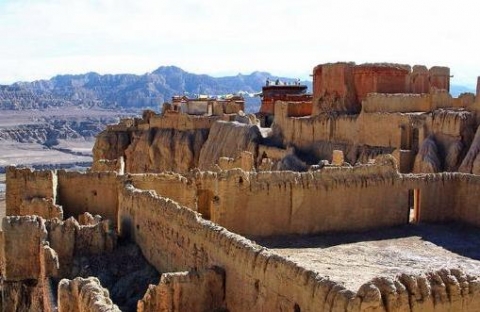Zhang Zhung culture gains more recognition

The picture shows the Zhang Zhung capital Khyung lung Dngul mkhar.
Many scholars argue that Tubo culture was the first to form in Tibet. However, new research findings show that Zhang Zhung culture predated Tubo culture by 400 years.
A recent exhibition of rare cultural relics provides ironclad proof of Zhang Zhung culture.
For example, silk artifacts that are estimated to be 1,800 years old were unearthed in what is believed to be the Zhang Zhung capital Khyung lung Dngul mkhar in the modern-day Ngari Prefecture of Tibet. Embroidered with the Chinese characters wanghou, meaning “nobility,” in Han script, it is the oldest silk discovered on the Qinghai-Tibetan Plateau. The findings demonstrate direct or indirect exchanges between Ngari and the Central Plain during Zhang Zhung culture.
The small golden mask excavated from tombs in Ngari Prefecture belongs to the same cultural system as masks discovered in northern India. It shows that before the Tubo developed, western Tibet had become a hub connecting Central Asia, East Asia, and South Asia.
Zhang Zhung was the center of ancient Tibetan civilization. It went through the Paleolithic Age, the Neolithic Age and the Metal Age and was a confluence of cultures from the pastureland, Eurasia and Tibet. These cultures in turn spread to other parts of the world through ancient roads in Zhang Zhung.
For quite some time, research on Zhang Zhung culture has been inadequate due to scarcity of relics and historical documents. The large quantity of relics related to Zhang Zhung culture displayed in the exhibition gave more recognition to the culture.
The exhibition took place alongside an international symposium on Zhang Zhung culture in Beijing from Sept. 19 to 21. It attracted more than 60 scholars and experts from China, the United States, France, Italy, the Netherlands, Canada, Japan and other countries.
Topics discussed at the event include history and religion, archeology and art, languages and culture, natural sciences, and exchanges between Zhang Zhung culture and Asian civilizations.
